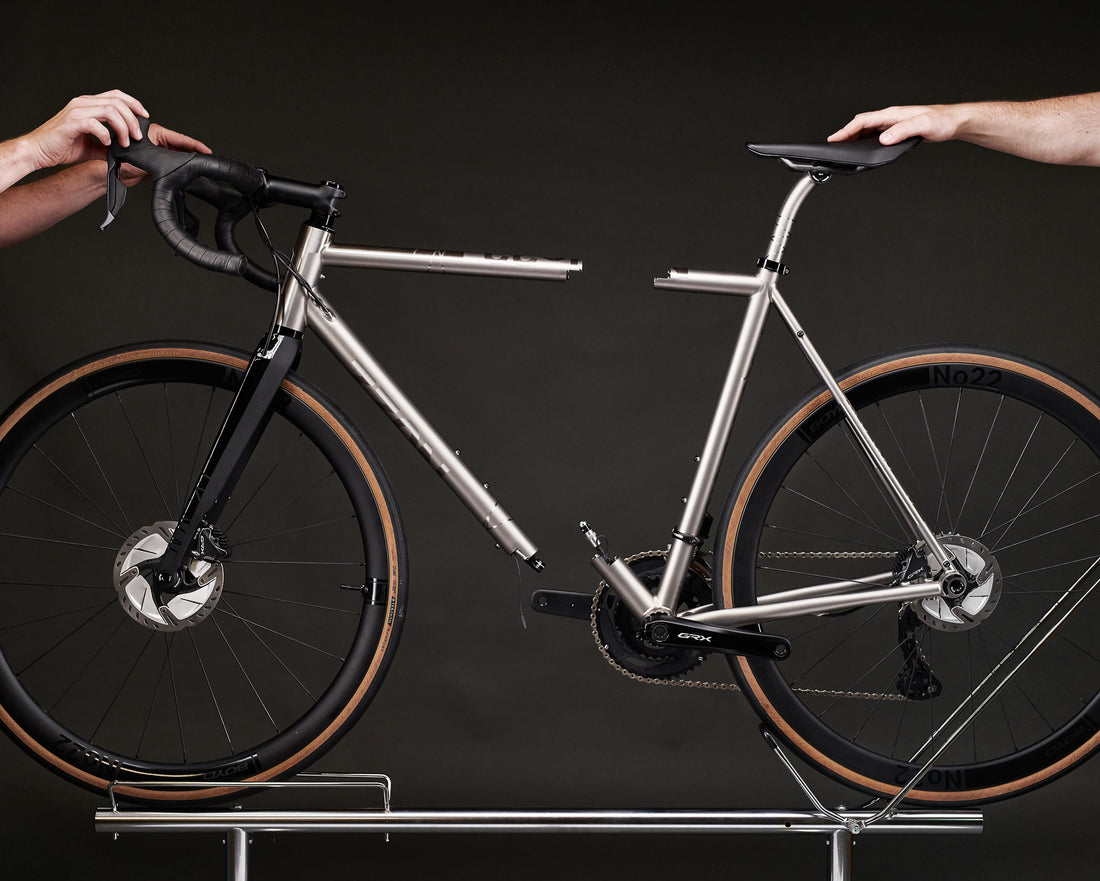Introducing our all-new coupler system

What was wrong with existing couplers?
If you do a lot of travelling with your bike, chances are you’ve dreamed of a bike with couplers. The appeal of taking your full-size bike and packing it safely into a standard checked luggage bag is obvious: no more eye-watering airline fees, easier travel to and from the airport, and no need to store a huge bike case at home when not travelling. However, existing coupler systems have some key shortcomings. They’re bulky, heavy, and some require special tools when packing and unpacking the bikes. Some weren’t designed with internal ports large enough to accommodate internal cable routing. Finally, for bikes with hydraulic brakes there was no easy way to separate the rear brake from the front of the bike for travel.
No. 22’s two-part solution
We’ve always dreamed of a better coupler solution, and after an extended development period we’re excited to finally have one. Our coupler bikes rely on two key innovations: our bespoke low-profile frame couplers, and our “Brake Break” hydraulic coupler for brake hoses.
Part one: Low-profile frame couplers
Our all-new frame couplers aim to improve every part of the coupler bike experience. Their first advantage is the most obvious: they’re gorgeous. By designing our own couplers we were able to match them precisely to the tubing we use to build our bikes, and the result is a seamless transition from frame tube to coupler, while still using exactly the tube diameters and wall thicknesses our bikes were originally designed around.

Coupling and uncoupling the frame is simplified too, with just a single 6mm hex bolt needed for each of the frame’s two couplers. No need for special tools to buy, store, or most importantly to remember to pack in your luggage.

The coupler’s interface itself is a complex machined surface that locks together in all axes. Once connected the interface is incredibly robust, resulting in a creak-free interface that rides just like our standard models.

The last improvement of our frame couplers is hidden internally, where generous ports are machined to allow for internally routed cables and even electronic junction boxes to pass through. This makes it easy to hide and access the portions of the cables that need to be disconnected for travel.
Part two: The Brake Break
With the proliferation of disc brakes on road and gravel bikes, riders looking for a bike with couplers have faced a set of less than ideal options when splitting the frame: either limiting brake options to cable discs with a cable quick disconnect, or if building with hydraulic discs then running the brake hose externally and removing the rear caliper and the cable guides for travel. We are still surprised that the big component players in the industry had no readily available solution to de-couple a hydraulic bicycle brake line.

Our clever Brake Break finally solves these problems for bikes with hydraulic discs. Borrowing its construction from motorcycle motorsports brake hose quick-disconnects, the Brake Break allows instant, tools-free connecting and disconnecting of the bike’s hydraulic brake hose. The design allows for a perfect seal when disconnecting and no rebleeding of the brakes is required even after multiple uses. Sized to easily pass through our frame couplers, the Brake Break removes the compromises formerly involved with couplers and disc brakes.
Pricing and availability
Our low-profile couplers are available as an option on any of our models at an upgrade cost of $1,250 including the Brake Break.


